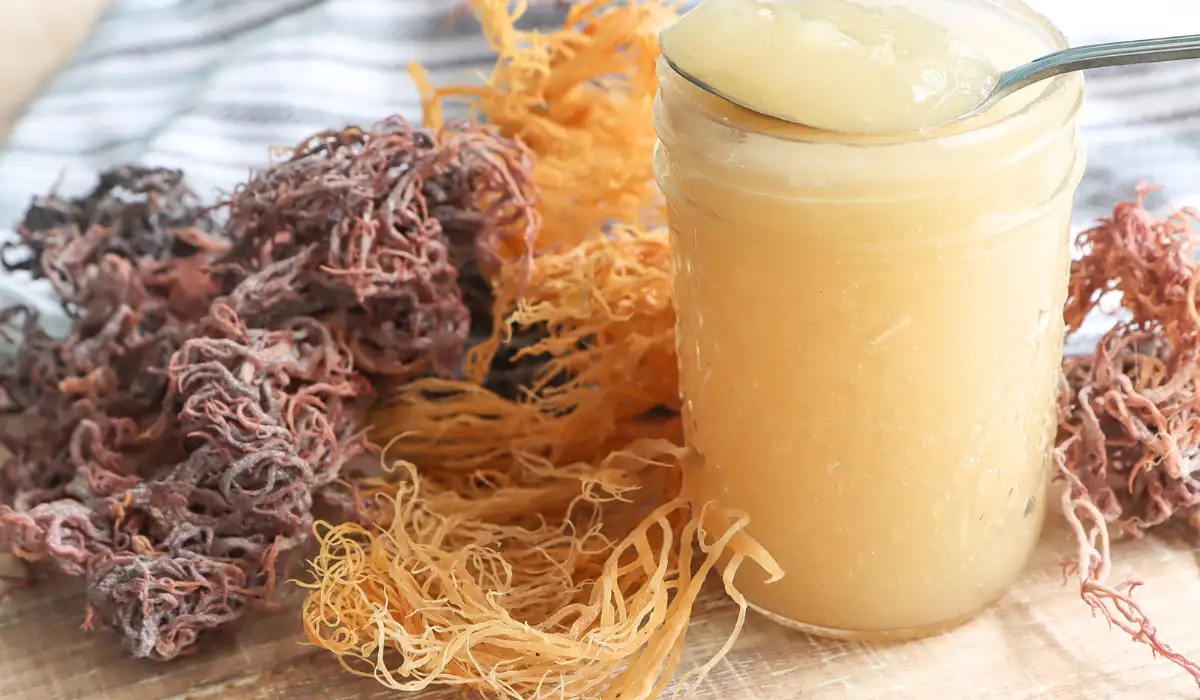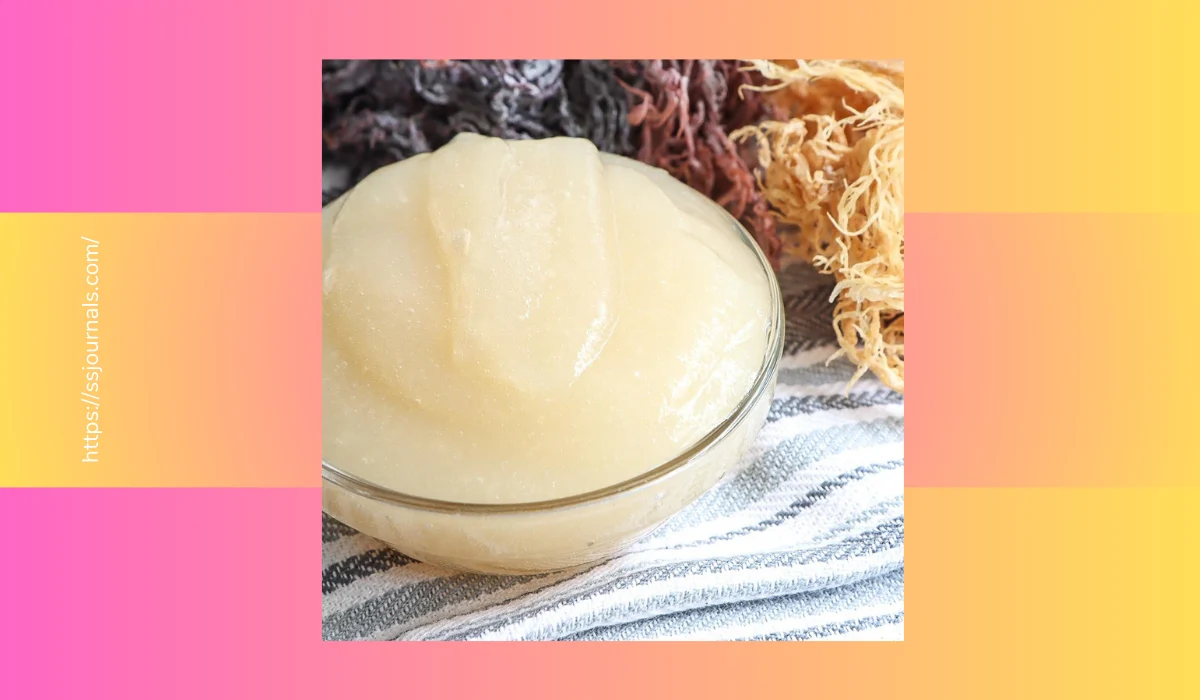You may have never heard of sea moss gel before, but it has been used in Chinese medicine for thousands of years to treat conditions like arthritis and fluid retention. It is made from very small aquatic plants that grow on the ocean floor.
But despite its name, sea moss is not true moss also known as Irish moss or Irish sea moss. It is a type of algae, commonly found on the coast of the Atlantic ocean and in countries such as Europe, Great Britain and North America. Being a type of vegetable, this makes sea moss vegan and gluten-free.
Sea moss is a type of red algae native to the Atlantic coast of the Caribbean Island, North America and Europe. Sea moss has become increasingly popular. There are several varieties that fall into the classification of sea moss, namely Chondrus crispus (found in colder climate), Gracilaria (found in warm weather), and Eucheuma Cotonni.
The sea moss gel guide

Through this article, discover everything you need to know about sea moss and its benefits, and how to prepare your own sea moss gel.
Instructions
The day before
- Clean the sea moss carefully are several times with filtered water
- Place the sea moss in a large salad bowl, cover with cold filtered water and leave to soak overnight
The day after
- Drain the rehydrated sea moss and place in the blender bowl
- Add the water cup by cup, blending until you obtain a smooth gel consistency
- Transfer the gel to one or more airtight containers and store in the fridge.
Preparation:15 minutes
Soaking: 12 hours
Cooking method: no cooking
Sea moss gel uses in cooking
When mixed with other ingredients, sea moss has a neutral taste. Ways to use sea moss gel:
A Jamaican love fitter: This Jamaican sea moss gel-based gel drink, known as a love portion, is made from a mixture of vegetable milk, nutmeg, cinnamon and vanilla. It’s Super comforting, vegan and gluten-free!
In smoothies and in your juices: The easiest way to enjoy the benefits of sea moss is to put it in a smoothie. Add one teaspoon of smoothie gel to your smoothies or juices. You can also add rehydrated sea moss directly!
As a thickener: Sea moss, often called Vegan gelatin, has a Mucilaginous, gel-like consistency, so it can be used to thicken foods. Use sea moss gel to thicken your soups, sauces, jams and desserts.
In vegan baking: The gel can be added to baked goods such as bread, muffins and cakes, and it makes a great egg substitute in any recipe. Make one teaspoon of sea moss gel with three tsp of water before adding it to your favorite recipes.
Spreading: If you like the salty taste of seaweed, you can eat sea moss gel like butter by spreading it in vinaigrette and sauces.
Benefits Of Sea moss gel
This gel is rich in vitamin C, amino acid, vitamin A omega-3 fatty acids, minerals and antioxidant.
It contains 92 of the 102 minerals our body needs like zinc, iodine, iron and more!
Because it is Mucilaginous (sticky and thick), it helps soothe the body’s mucus membrane and helps the body get rid of any excess mucus. It is particularly helpful in reducing congestion and clearing phlegm build up in the lungs, which is especially helpful when you are dealing with a cold. Sea moss gel is also a prebiotic and helps get rid of bad bacteria in the gut, and improve digestive health.
This gel is as well beneficial for your skin! Due to its high vitamin and mineral content, sea moss is ideal when applied directly to the skin.
How to use Sea Moss Gel for other Purposes?
To feed your plants: Try adding sea moss gel to your water when watering your plants. Sea Moss is wonderful for the soil and provides plants with a ton of nutrients. Simply mix 1 to 2 tsp of sea moss gel in half a little of water.
As a face mask: Sea moss does wonders for the skin. As it helps the body produce collagen, it is also called Vegan collagen. You can apply it directly to your face for even more glow, or mix 2 tablespoons of sea moss gel with a tablespoon of turmeric powder. Sea moss helps moisturize the skin and turmeric is antibacterial and has anti-inflammatory properties, which helps clear or reduce breakout.
To treat stretch marks: Seaweed contains antioxidants that can hydrate the skin, promote healthier cell growth, and fight inflammation, which can fade stretch marks.
To nourish the hair: Sea moss gel can soothe a dry, damaged scalp. Since it contains a lot of polysaccharides, which have humectant properties, applying it to your scalp can help retain moisture and combat dryness and flaking. It can even soothe itching when applied topically and can also help fight infections such as fungal infections due to its antibacterial and antifungal properties.
Respiratory diseases: Sea moss helps reduce inflammation, effective for respiratory problems. It would act as an expectorant and help eliminate excess mucus when you have a cold or caught a cold. Honey and lemon juice are added to gel to make a syrup to treat sore throat or coughs.
Digestive disorders: Sea moss is a prebiotic that will help you with digestive problems, such as constipation, diarrhea, and even weight loss. Red algae reduces the absorption of fat and their storage.
Sexuality: It is an excellent fortifier being the equivalent of wood bandage in the regions where it is consumed. It’s zinc composition would act on testosterone and improve fertility.
Conclusion
The sea moss used in the Caribbean and Gracilaria or Eucheuma while the Iris most formally used by the Irish Chondrus crispus. Properties, antiviral, antimicrobial, antibacterial. Sea moss is a good source of nutrient, it contains 92 minerals out of the 102 that our body contains. Calcium, magnesium, sulfur, iron, selenium, potassium, zinc, amino acid.
Warning: sea moss is a good source of iodine and therefore stimulate the thyroid.

